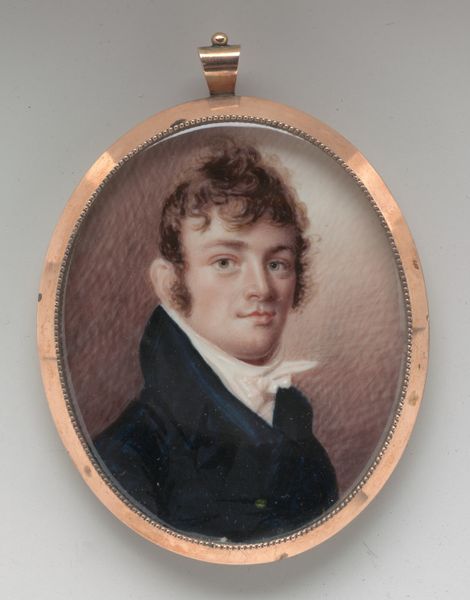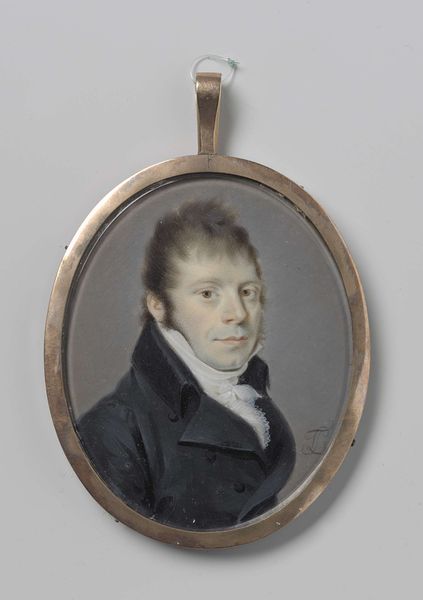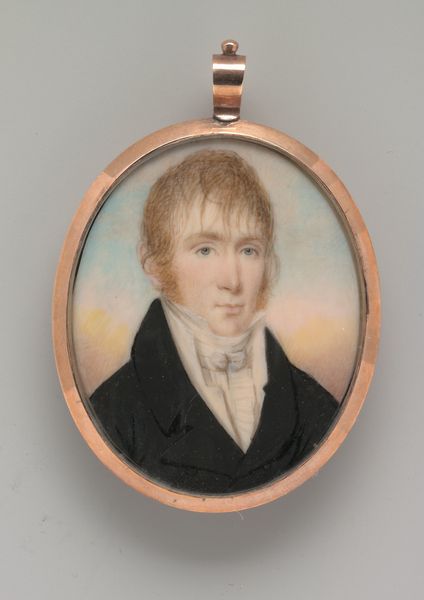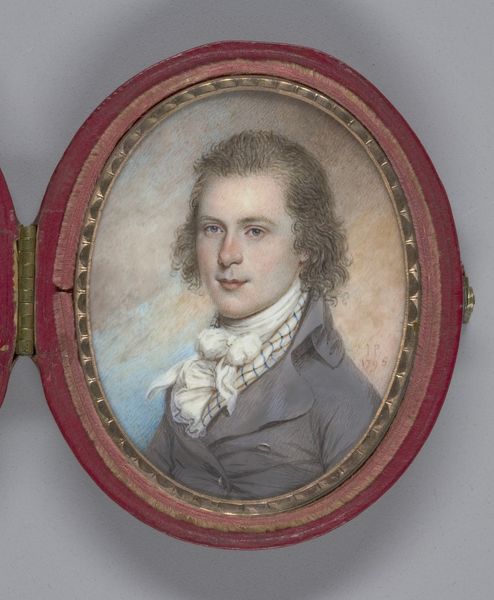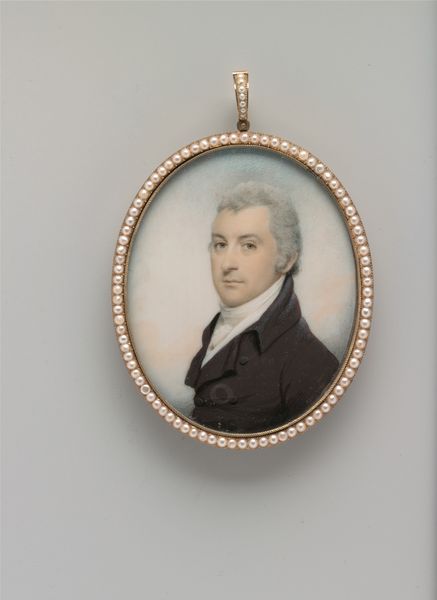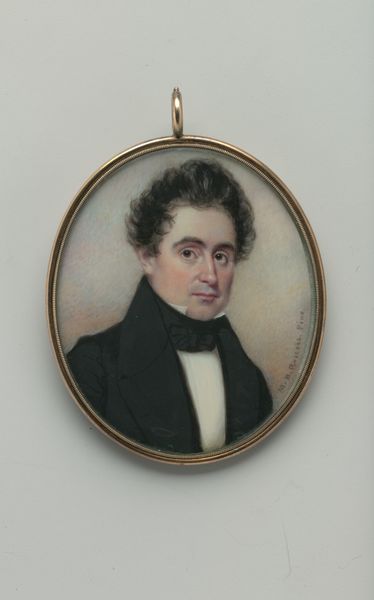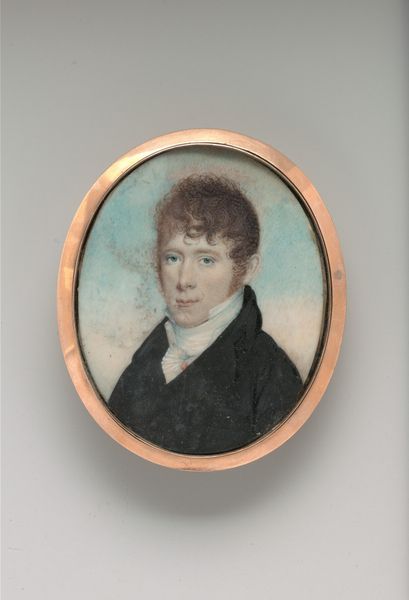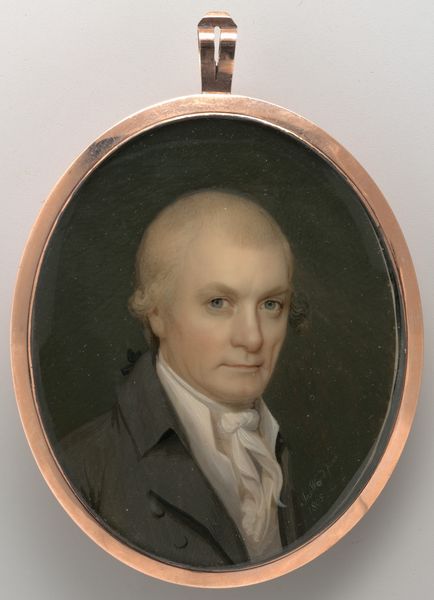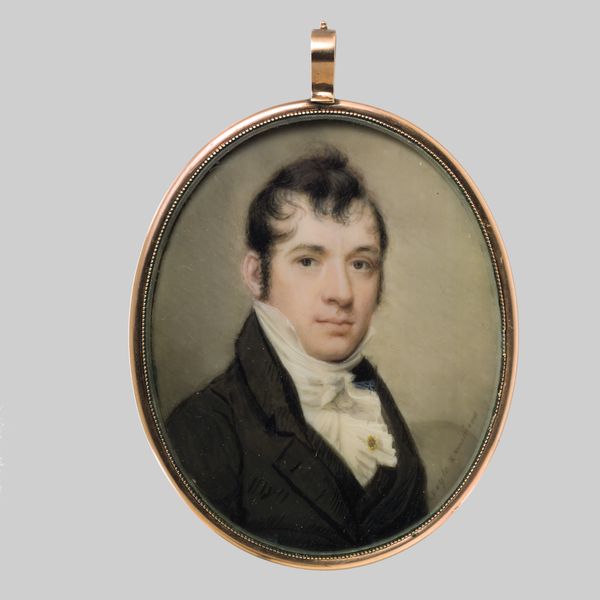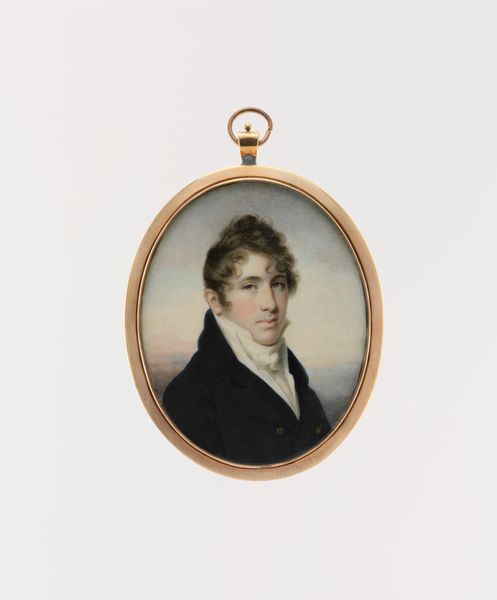
painting, watercolor
#
portrait
#
painting
#
watercolor
#
romanticism
Dimensions: 2 3/4 x 2 1/4 in. (7.1 x 5.7 cm)
Copyright: Public Domain
Curator: Looking at this, the word 'genteel' comes to mind. There's something very calm and refined about it, almost as if capturing a fleeting moment of dignity. Editor: Yes, it's certainly striking how it arrests your attention. What exactly are we viewing? Curator: We're examining a watercolor on ivory titled "Anthony Wayne Robinson," created around 1811 by James Peale. It currently resides at The Metropolitan Museum of Art. Editor: Miniatures such as this often functioned as signifiers of status. Beyond the aesthetic, how would a portrait of this kind serve in the social sphere? Curator: Precisely! They served many functions, from marking political allegiances to acting as symbols of sentimental love, and promoting specific messages about prosperity and standing within a certain societal ecosystem. Note, in this case, the framing in gold: who might own something like that, who might desire this object? Editor: The composition does betray some ambivalence; the gaze isn't directed out toward the viewer. He seems caught between worlds – the interior and exterior. Curator: Right, I agree that Anthony Wayne Robinson appears thoughtful, reflective almost. This was made during the period of Romanticism after all. I wonder, however, if the slight turn of his body in conjunction with his gaze can signal to us a resistance or a kind of aversion to the constraints and pressures that came along with performing certain aspects of masculinity at this moment. It looks like Robinson isn’t facing them head-on. Editor: It also gives a vulnerability, a peek behind a constructed identity, which is an interesting challenge to conventional portraiture's desire to create and reinforce social hierarchy. Curator: In addition, portraits like this participated in economies of reproduction, making portraits of loved ones available across geographical distance as commodities, but also often reinforced, white, patriarchal values in the process. I think it is critical that we confront this visual language that may subtly affirm certain historical power dynamics that continue to affect our lives today. Editor: An insightful point! This brief exchange has allowed us to view an 18th century work as not just art, but a time capsule for some historical ideas. Curator: Absolutely, it makes one reconsider their place in this vast genealogy.
Comments
No comments
Be the first to comment and join the conversation on the ultimate creative platform.

